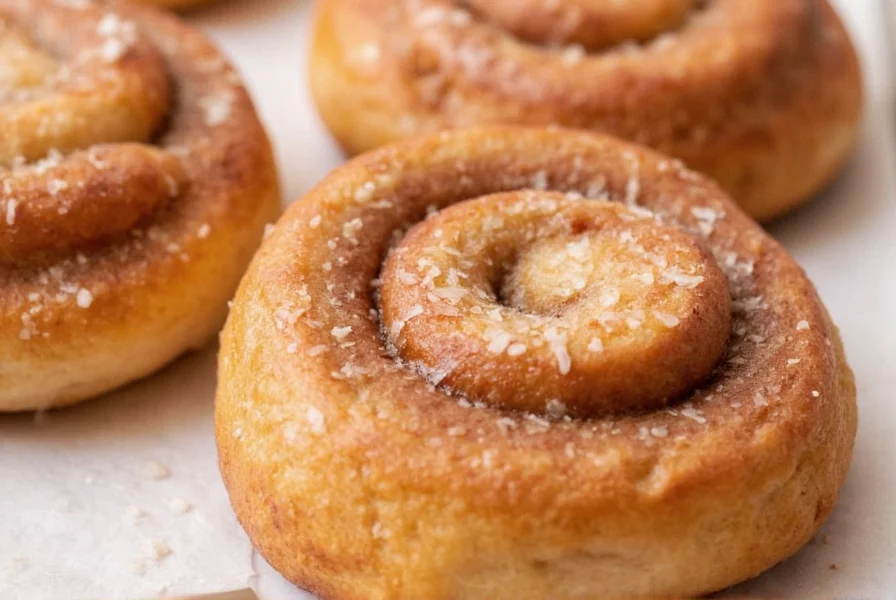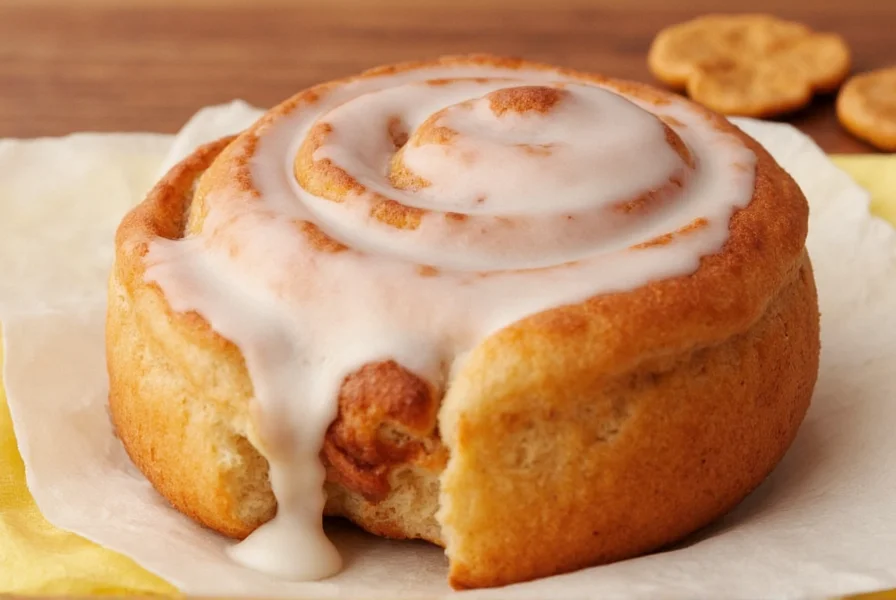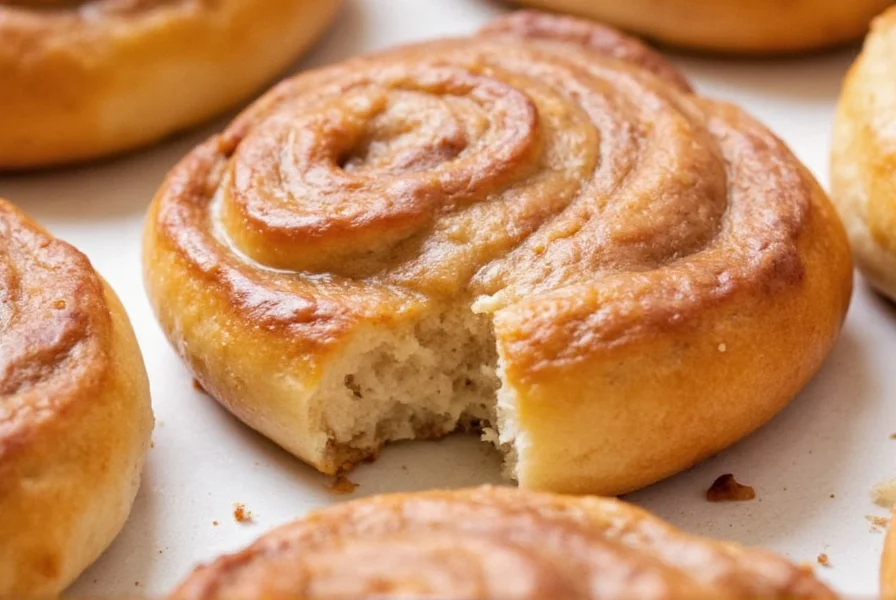Cinnabon's classic cinnamon roll has become a cultural phenomenon since the brand's founding in 1985. What began as a small bakery in Seattle has grown into a global sensation, with the Cinnabon Classic Roll remaining the undisputed star of their menu. Understanding what makes these pastries so distinctive requires examining several key elements that differentiate them from traditional homemade cinnamon rolls.
The History Behind the Iconic Roll
Founded by Greg and Rich Komen in 1985, Cinnabon set out to create the "ultimate" cinnamon roll experience. The brothers experimented with various cinnamon varieties before settling on Makara cinnamon from West Sumatra, Indonesia. This specific cinnamon variety contains higher oil content and lower cellulose than other cinnamons, resulting in a more intense, complex flavor profile with less bitterness. The decision to use this premium ingredient became a cornerstone of Cinnabon's signature taste.
Early success in shopping mall locations demonstrated consumers' willingness to pay premium prices for an exceptional cinnamon roll experience. The brand's distinctive aroma became a powerful marketing tool as the scent would draw customers from throughout shopping centers.
What Makes Cinnabon Cinnamon Rolls Special
The magic of Cinnabon's famous roll comes from multiple carefully calibrated elements working in harmony:
| Characteristic | Cinnabon Roll | Traditional Homemade Roll |
|---|---|---|
| Cinnamon Type | Makara cinnamon (Indonesian) | Ceylon or Cassia cinnamon |
| Dough Texture | High-butter content, enriched dough | Standard yeast roll dough |
| Baking Method | Baked tightly together in pans | Baked with space between rolls |
| Frosting Application | Applied warm, creating signature drip | Typically applied after cooling |
The Makara Cinnamon Difference
What many consider the most crucial element is Cinnabon's exclusive use of Makara cinnamon. This specific variety contains approximately 3-4% essential oil content compared to 1-2% in standard cinnamon varieties. The higher oil concentration delivers more intense flavor and aroma while maintaining a smoother, less harsh taste profile. Cinnabon purchases this cinnamon directly from Indonesian growers, maintaining strict quality control throughout their supply chain.
Dough Composition and Preparation
Cinnabon's dough contains a higher proportion of butter and sugar than traditional cinnamon roll recipes. The enriched dough undergoes a specific kneading and rising process that creates an exceptionally soft, slightly chewy texture. When preparing the rolls, bakers place them tightly together in the baking pan, allowing the sides to touch during baking. This technique creates the distinctive soft, pull-apart quality that has become synonymous with the brand.

Frosting Application Technique
The cream cheese frosting isn't just about ingredients—it's about timing. Cinnabon applies their signature frosting immediately after the rolls emerge from the oven while they're still hot. This technique allows the warmth of the roll to slightly melt the frosting, creating that distinctive drip effect down the sides of each roll. The contrast between the warm roll and cool frosting creates a textural experience that's become iconic.
Cinnabon vs Homemade Cinnamon Rolls
While many home bakers attempt to recreate the Cinnabon experience, several factors make authentic replication challenging:
- Proprietary ingredients: The specific Makara cinnamon and exact formulation of other ingredients remain closely guarded secrets
- Commercial equipment: Professional ovens and preparation methods differ from home kitchen setups
- Scale of production: Baking dozens of rolls simultaneously creates different heat distribution than smaller home batches
- Consistency protocols: Strict quality control measures ensure uniformity across all locations
Many home recipes approximate the Cinnabon experience by using high-quality cinnamon, increasing butter content in the dough, and baking rolls tightly together. However, the exact flavor profile remains elusive to most home bakers.
Nutritional Profile of the Classic Roll
A standard Cinnabon Classic Cinnamon Roll (approximately 3.2 oz or 91g) contains:
- Calories: 880
- Total Fat: 38g (49% of daily value)
- Saturated Fat: 20g (100% of daily value)
- Carbohydrates: 122g (41% of daily value)
- Sugars: 69g
- Protein: 7g
It's worth noting that Cinnabon has introduced smaller portion options like the MiniBon and bite-sized treats for those seeking a less indulgent experience while still enjoying the signature flavor.
Where to Find Authentic Cinnabon Rolls
While Cinnabon operates standalone stores in many locations, the brand has expanded into various retail environments. Authentic Cinnabon products can be found at:
- Standalone Cinnabon bakery locations
- Food courts in major shopping malls
- Airport terminals worldwide
- Select grocery stores carrying frozen Cinnabon products
- Some gas station and convenience store chains

When seeking authentic Cinnabon rolls, look for the distinctive logo and packaging. The company maintains strict quality control across all distribution channels to ensure consistency in their signature product.
Seasonal and Special Variations
Beyond the classic roll, Cinnabon has expanded its offerings with various limited-time and permanent variations that maintain the core characteristics while introducing new flavor profiles:
- Pecan Streusel Roll: Features a brown sugar-pecan topping
- King Size Roll: An extra-large version of the classic roll
- Double Decker Roll: Two layers of cinnamon roll with icing in between
- Seasonal offerings: Pumpkin spice rolls in fall, peppermint rolls in winter
- Cinnabon Delights: Bite-sized versions of their classic roll
Despite these variations, the classic Cinnabon roll remains the most popular item, accounting for the majority of sales across all locations.
Conclusion: The Enduring Appeal
The enduring popularity of Cinnabon cinnamon rolls stems from a carefully balanced combination of premium ingredients, precise preparation methods, and consistent quality control. While the exact recipe remains proprietary, understanding the key elements—particularly the Makara cinnamon, enriched dough, tight baking method, and warm frosting application—explains why these rolls have maintained their distinctive appeal for decades. For those seeking the authentic experience, visiting an official Cinnabon location remains the surest way to enjoy what has become a globally recognized treat.
Frequently Asked Questions
What type of cinnamon does Cinnabon use in their rolls?
Cinnabon uses a specific variety called Makara cinnamon sourced from West Sumatra, Indonesia. This cinnamon has higher essential oil content (3-4% compared to 1-2% in standard varieties), resulting in a more intense, complex flavor with less bitterness than other cinnamon types.
Why are Cinnabon rolls so soft and pull-apart?
Cinnabon rolls achieve their distinctive soft, pull-apart texture because they're baked tightly together in the pan with the sides touching. This method creates steam between the rolls during baking, resulting in the characteristic soft sides that easily separate.
Can you buy Cinnabon cinnamon rolls to make at home?
Yes, Cinnabon offers frozen rolls and roll kits in many grocery stores that can be baked at home. These products contain the signature Makara cinnamon and are designed to replicate the bakery experience, though they may not perfectly match the texture and freshness of rolls made in Cinnabon locations.
How does Cinnabon apply their frosting to get the signature drip?
Cinnabon applies their cream cheese frosting immediately after the rolls come out of the oven while they're still hot. The heat from the fresh-baked roll slightly melts the frosting, creating the distinctive drip effect down the sides. This timing is crucial to achieving their signature presentation.











 浙公网安备
33010002000092号
浙公网安备
33010002000092号 浙B2-20120091-4
浙B2-20120091-4